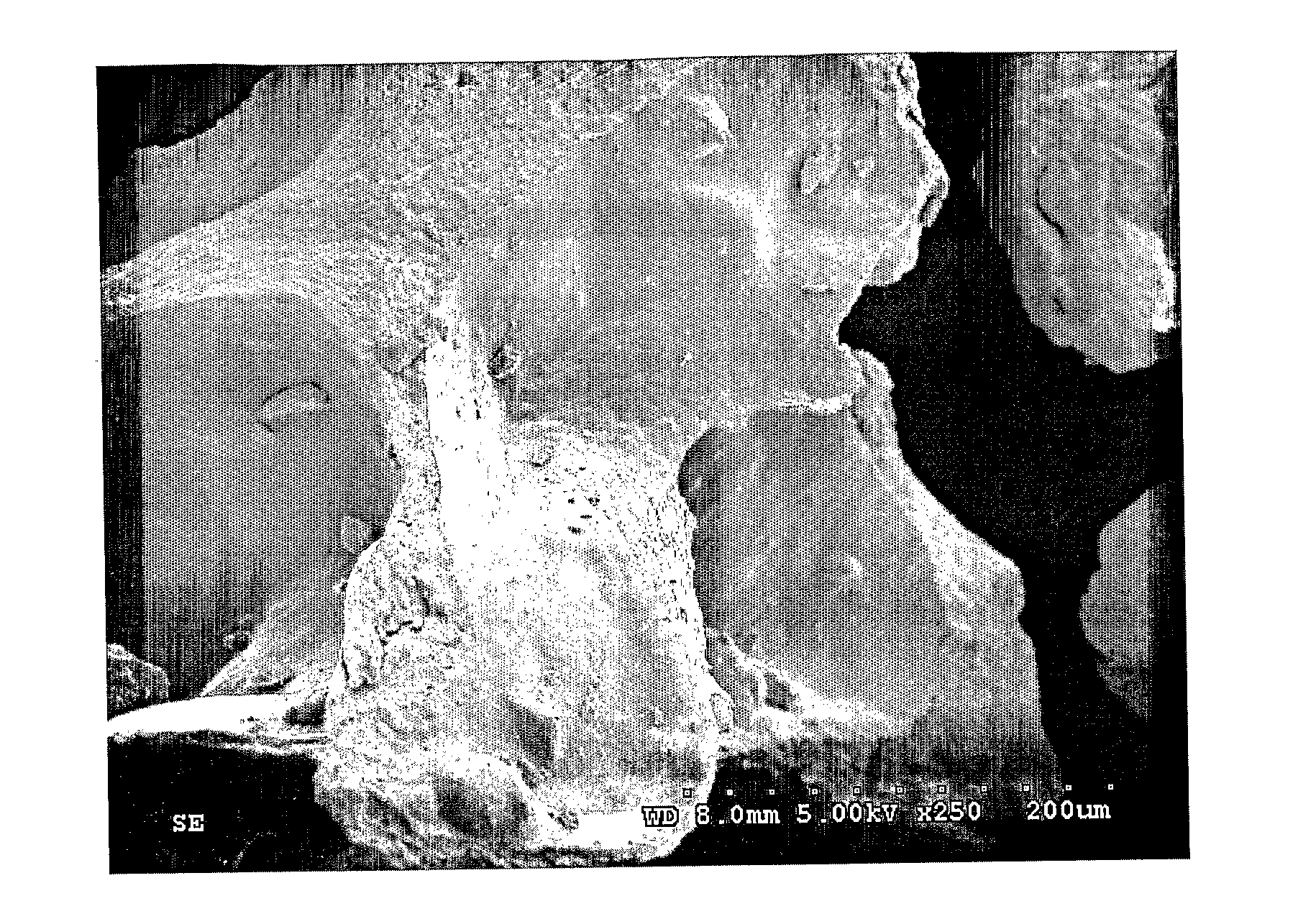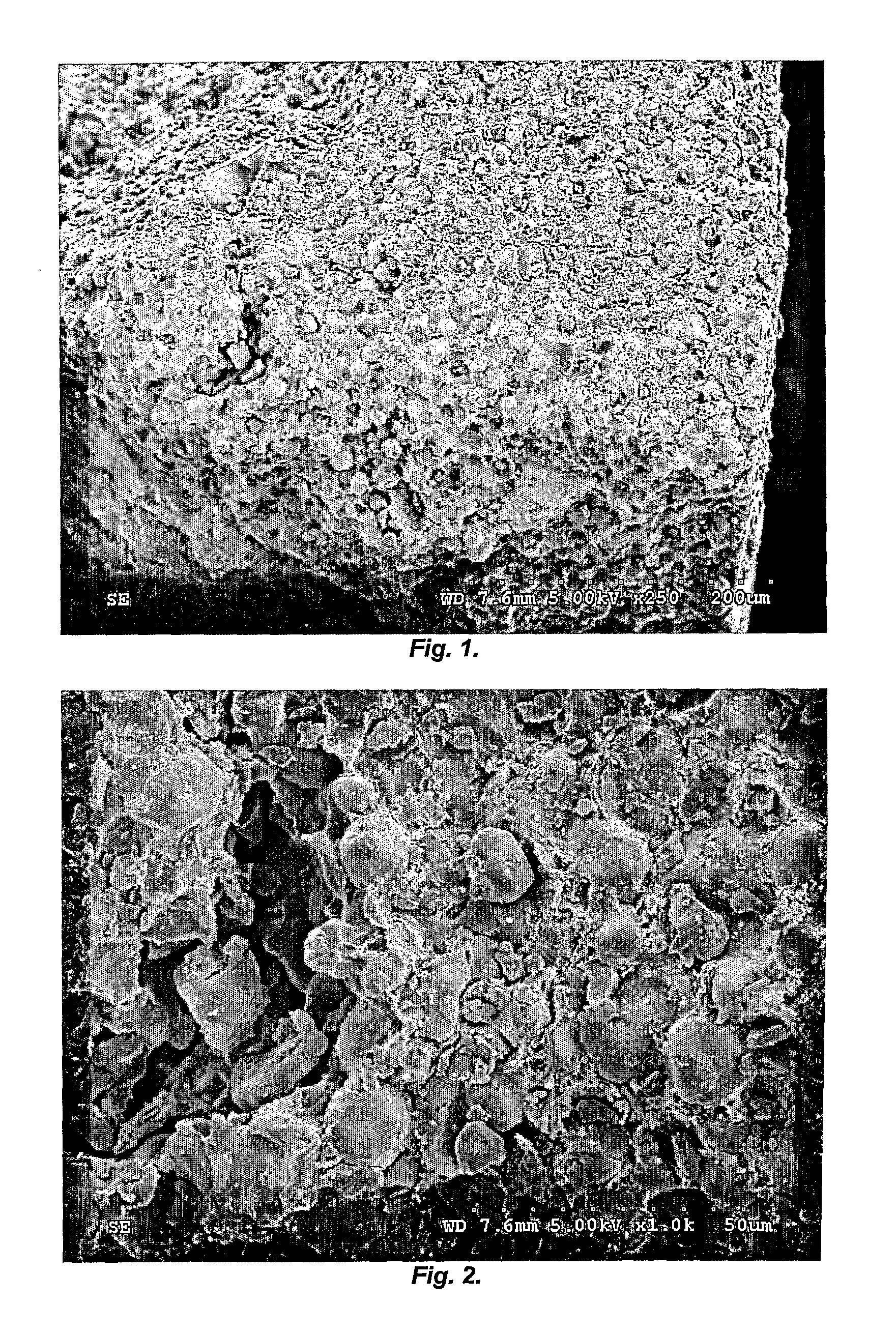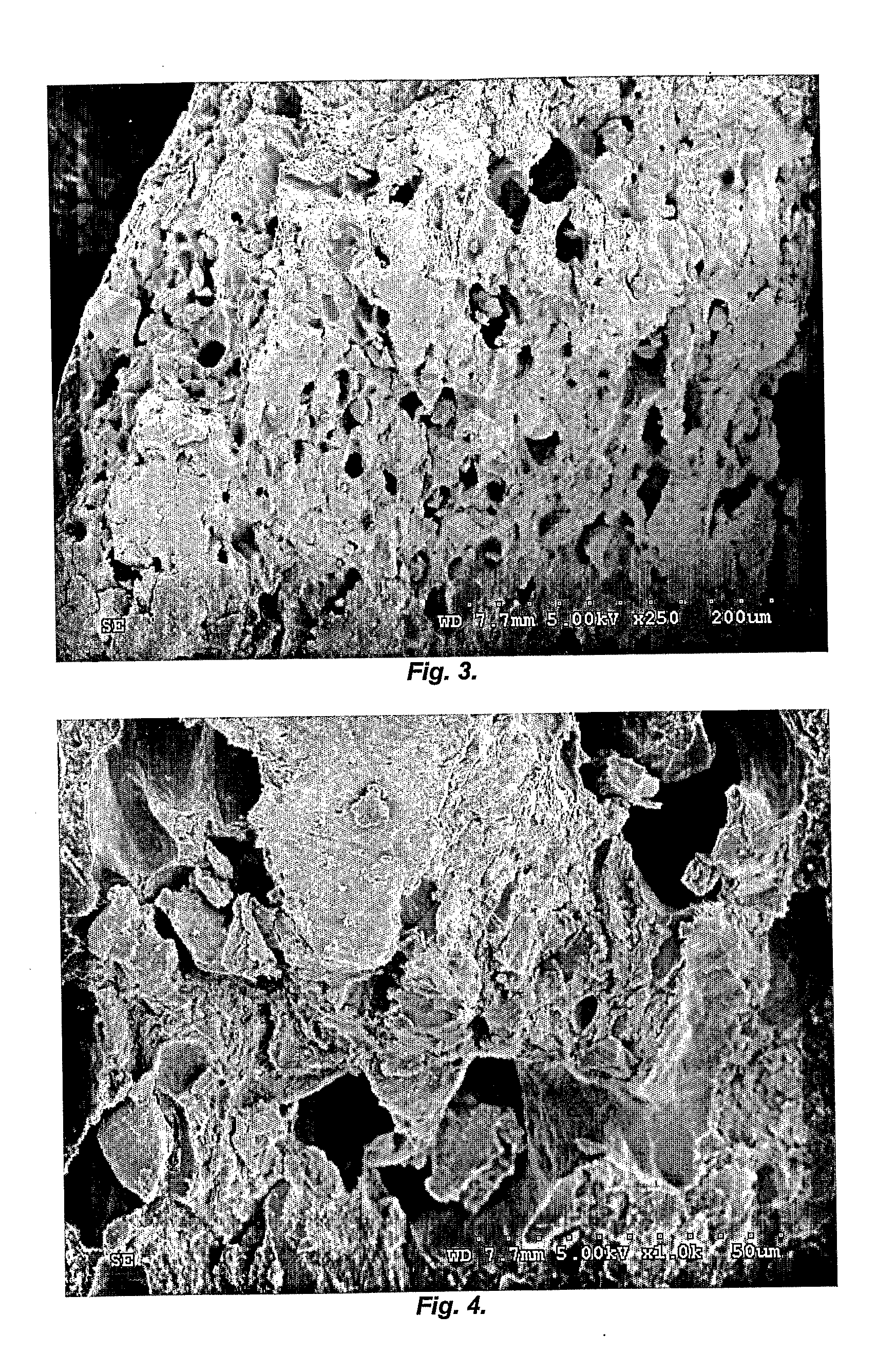Polysaccharide-Inorganic Composite Particles as Performance Additives for Superabsorbent Polymers
a technology of composite particles and superabsorbent polymers, applied in the field of additives, can solve the problems of excretion of physiological fluids, and non-optimal superabsorbent performance of these absorbent cores, and achieve the effect of improving superabsorbent performan
- Summary
- Abstract
- Description
- Claims
- Application Information
AI Technical Summary
Benefits of technology
Problems solved by technology
Method used
Image
Examples
example 1
Starch, Zeolite, Clay Composite Additive Semi-Uniform Morphology
[0103]A mixture comprised of 70% wheat starch, 24% bentonite and 6% zeolite was compounded using the Baker Perkins twin-screw extruder with a die opening of 9 mm. The solid composition was mixed and wetted with 30% tap water. The mixture was fed with a volumetric feeder and extruded at a throughput of 31 kg / h. Cooling was applied to the extruder using tap water, and all zones were 16° C. Zone 1 was not used. The screw speed was set at 200 RPM. The agglomerated material exited the extruder at about 75° C. with a die pressure of about 270 psig. The motor load was at about 30-40%. This indicates that frictional heat was generated in the process.
[0104]The extrudates were then placed in a convection oven at 85° C. for at least 3 hours and ground. The ground product was sieved using a RO-Tap sieve shaker. Samples larger than 30 Mesh were discarded, as well as samples smaller than 40 Mesh, in order to avoid any particle size e...
example 2
Starch, Zeolite, Clay Composite Additive Uniform Morphology
[0105]A mixture comprising of 70% wheat starch, 24% of bentonite and 6% of zeolite was compounded using the Baker Perkins twin-screw extruder with a die opening of 6 mm. The solid composition was mixed and wetted with 26% tap water. The mixture was fed with a volumetric feeder and extruded at a throughput of about 18 kg / h. Temperature zones were: Z1 zone was not used, Z2=32° C., Z3=38° C., Z4=48° C., Z5=65° C., Z6=82° C., Z7=93° C., Z8=104° C., Z9=115° C. The screw speed was set at 100 RPM. The agglomerated material exited the extruder about 131° C. The motor load was about 40%.
[0106]The extrudates were then placed in a convection oven at 85° C. for at least 3 hours and ground using a high-speed chopper. The ground product was sieved using a RO-Tap sieve shaker. Samples larger than 30 Mesh were discarded, as well as samples smaller than 40 Mesh, in order to avoid any particle size effect interference on performances of the a...
example 3
Starch, Zeolite, Clay Composite Additive Agglomerated Morphology
[0107]A mixture comprising of 70% corn starch, 24% of bentonite and 6% of zeolite was compounded using the Coperion twin-screw extruder. The mixture was fed with a volumetric feeder at a rate of 194 Kg / h and 26% of cold water added. Corn starch, bentonite and zeolite were fed separately in the Coperion extruder with gravimetric feeders at the rate of 300 lbs / h, 103 lbs / h and 26 lbs / h, respectively. Tap water was injected at a rate of 155 lbs / hr, corresponding to a 26% addition. The extrusion throughput was about 580 lbs / hr. Temperature zones were: Z1=15° C., Z2=34° C., Z3=35° C., Z4=35° C., Z5=34° C., Z6=36° C., Z7=41° C., Z8=43° C., Z9=47° C. The screw speed was set at 220 RPM. The agglomerated material exited the extruder about 35° C. The motor load was about 15%.
[0108]The extrudates were then placed in a convection oven at 85° C. for at least 3 hours and ground using a high-speed chopper. The ground product was sieve...
PUM
| Property | Measurement | Unit |
|---|---|---|
| diameter | aaaaa | aaaaa |
| particle size | aaaaa | aaaaa |
| size | aaaaa | aaaaa |
Abstract
Description
Claims
Application Information
 Login to View More
Login to View More - R&D
- Intellectual Property
- Life Sciences
- Materials
- Tech Scout
- Unparalleled Data Quality
- Higher Quality Content
- 60% Fewer Hallucinations
Browse by: Latest US Patents, China's latest patents, Technical Efficacy Thesaurus, Application Domain, Technology Topic, Popular Technical Reports.
© 2025 PatSnap. All rights reserved.Legal|Privacy policy|Modern Slavery Act Transparency Statement|Sitemap|About US| Contact US: help@patsnap.com



